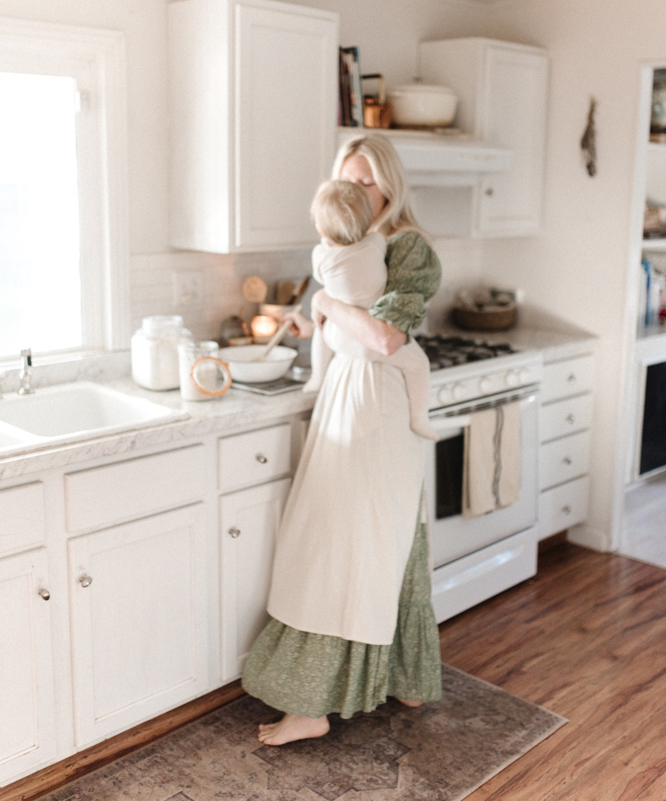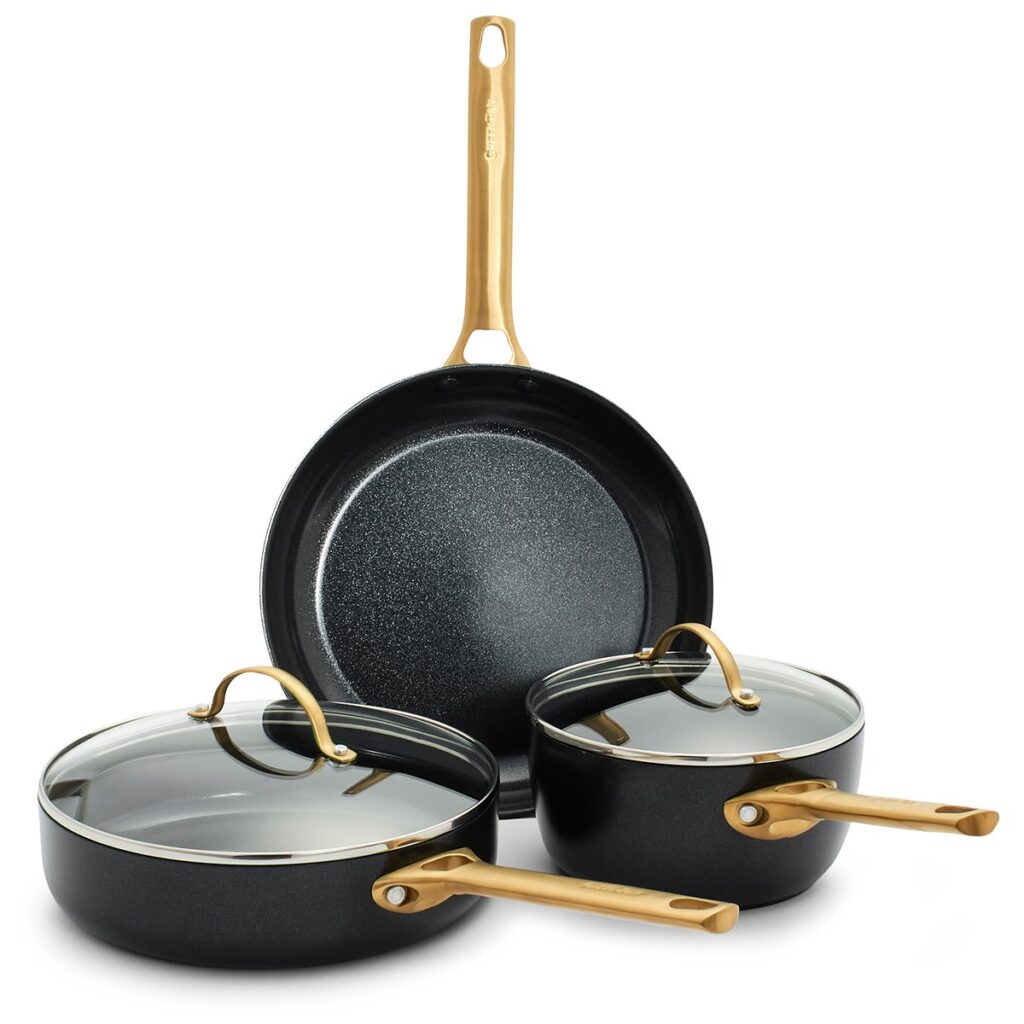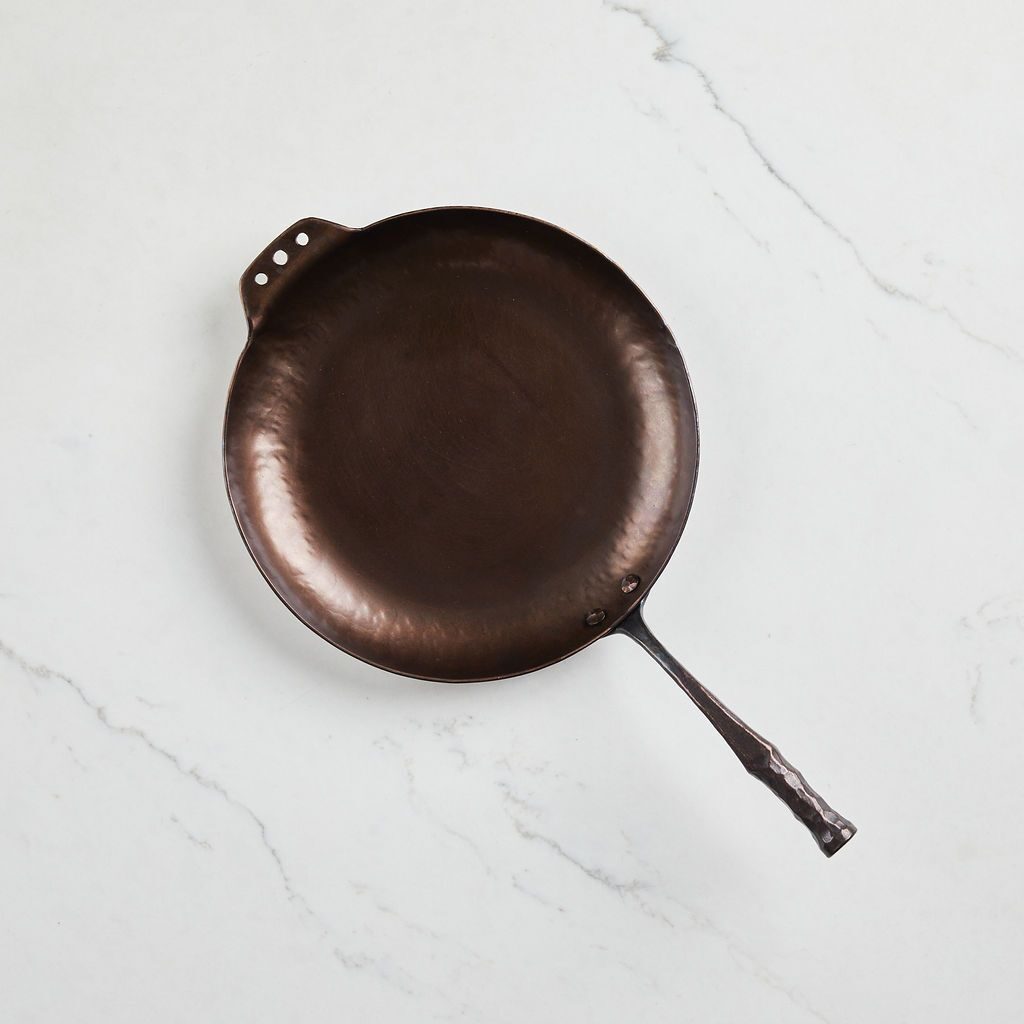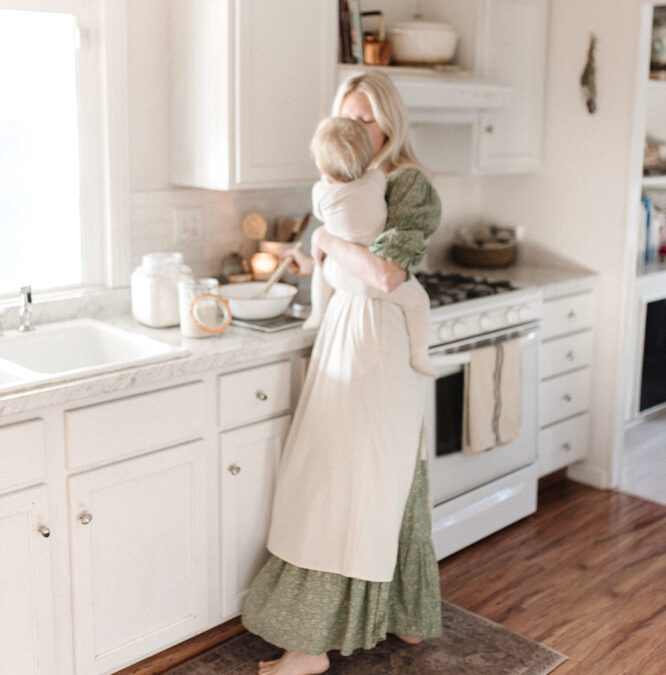I don’t believe there’s anything archaic or oppressive about cooking for your family. It’s empowering to know what and how your family is being fed; what is going into their bodies. You can still eat out or make that frozen meal, but cooking at home with food, and cookware, that we know and trust to be the best for our family, will always be an investment worth making in my book.

I’ve been cooking three meals a day, everyday, with the same set of pots and pans that my mom got us on Costco special 10 years ago. The issue with that isn’t that they are old, in fact, I hope to get new pots and pans that will be handed down to my children one day, it’s that I now know what is in that non-stick coating, and how bad it can be for us. I also now know that all of those scratches on the bottom of those pots and pans are sending these chemicals into our food everytime I cook with them. I literally had no idea about any of that until I began transitioning everything in our home to more toxin free options.
And now as we prepare to move across the country, and as we renovate the kitchen in our new home into a much more efficient space for our large family and homesteading type lifestyle, we are rethinking many of our kitchen utensils. Leaving most of them behind and equipping our future kitchen with lifetime guaranteed, health conscience pieces, is what we are leaning towards! But oh the options! With cookware alone, as we will be examining in this post, we looked at cast iron, ceramic, stainless steel, copper, and carbon steel. I use “we” because honestly my husband was just as involved in researching and weighing our options as I was, and truth be told, he often brings up really great points, whereas I tend to just look at aesthetics. For example, before I even researched anything else, I was initially going to buy Caraway. I had the cookware and bakeware sets in my cart, and called my husband to see what he thought. I sent him the link, and within a few minutes he had found some research that made it clear that this particular brand, although beautiful and I think a really solid option for a lot of people, just wasn’t the best idea for me personally… I’ll explain here in a minute.
I didn’t consider traditional “non-stick” or teflon pieces and here’s why, “…because they are usually made with a polymer coating whose active ingredient is called polytetrafluoroethylene (PTFE), a substance that is more slippery than wet ice, according to the Cookware Manufacturers Association. You may know PTFE by its brand name, Teflon. Studies have found that at temperatures routinely used for cooking (in the range of 400 to 500 degrees Fahrenheit), PTFE releases chemicals that may be unsafe for humans; there is evidence that the same fumes may be deadly to birds, as well. These chemicals also tend to get into our water supply and wreak havoc on the environment because they’re what the FDA calls ‘forever chemicals.’” -https://www.rd.com/list/safest-cookware/
So let’s look at what we researched, and ultimately made our decision on. We considered: health (what is it made out of and is there a chance of chemicals leaching into our food), durability ( I want these to last the rest of my cooking days and then some!), and appearance ( because let’s be real… I have an aged brass pot rack going above my range in the new house and I need some nice pots and pans that will also be what I use daily).
Ceramic cookware

pros : non-toxic, naturally non-stick, non-reactive to acidic foods, and pretty,
Cons: Not very durable – the ceramic can crack if not handled gently, and once that happens, you are out of luck. I am not a gentle cook or dishwasher, and when my husband read that part in a few different reviews, he lovingly let me know that this probably wasn’t the best option for me haha. However, if you are able to be more gentle – ie not whacking it against another pan or the sink – then I think this a great option!
Options: Caraway, greenpan, kyosera, Great Jones
Stainless steel

Pros: durable, versatile to use, easy to maintain, can cook acidic foods in them
Cons: food can stick, many pieces, especially the most affordable options, can be a combination of chromium and nickel. If you have a nickel allergy or if that piece has a higher nickel content, it can be bad for your health.
Options: all clad, mauviel, kitchara, cook’s standard
As long as your stainless steel is 18/0 or 18/10, from what I have read, that shouldn’t cause concern health wise.
Cast Iron

Pros: durable, some brands are lifetime guaranteed, naturally non stick if well maintained, zero health concerns, versatile to use, some nice attractive options
Cons: heavy, needs to be seasoned and cared for or it will become sticky, some enamel coatings can contain lead, can’t cook acidic foods in it – le creuset does not contain lead in the enamel.
Options: lodge, le creuset, smithey ( a friend of mine just told me about this company and I love it!)
Copper

Pros: easy on the eyes, nice even cooking, lasts forever if well maintained,
Cons: can be a health concern if not lined with a non-toxic metal like stainless steel, needs to be cleaned and maintained.
Options: mauviel, Lagostina Martellata, all clad
Carbon steel

All the same pros as cast iron… carbon steel is essentially cast iron, but instead of poured into a “cast” to make the pieces, carbon steel is thinner and forged into shape. It is lighter than cast iron however.
Needs to be cared for the same way as cast iron
Options: smithey, Lodge, Madeincookware
So what did we decide to invest in? A combination of sorts. Since stainless steel was better for acidic foods like tomato based sauces and soups, I didn’t want to go all cast iron. Here is the combination of pieces I think will suit our needs the best:
Smithey 12 inch carbon steel farmhouse skillet (handmade in South Carolina too!)
Mauviel copper 3.5 qt saucepan with stainless steel lining
Mauviel copper 12 inch fry pan with stainless steel lining
Le Creuset 10 inch cast iron skillet
Le Creuset 7 ¼ qt cast iron dutch oven
Le Creuset cast iron skinny grill
I know what a huge investment these pieces are, but I was so happy to be able to catch a few of them on sale this week. I also am happy that all of the pieces above have lifetime warranties! With proper care, these cookware pieces should last a lifetime and then some. I also acknowledged that there are some great more affordable pieces that will achieve similar results, and if you apply the knowledge above, I’m certain you can find some that are less of an investment and will work great as well. Like I said, I have been cooking with the same very inexpensive cookware for a long time… my whole adult life actually. But I have saved and saved, and as someone who cooks 3 meals a day at home for my family, investing in quality cookware was something I was willing to do. I also invested in a few silpat mats… the cookie mat, the full baking sheet mat, the muffin mat and the scone mat. No more parchment paper or muffin liners!


We LOVE our Smithey, cast iron skillets! I’m pining to get a dutch oven and some carbon steel cookware from them too. It is the best cast iron cookware I have ever used. Highly highly recommend!
Amazing!! I am so happy a girl friend told me about them! I am so excited to use it!
I had no idea silpat made muffin liners!! Adding to my Christmas list for sure!
This was a great post, Alex. Thanks so much for sharing your research with us!
I was so excited to see that as well!!
This was a very timely post for our family. We switched to cast iron seven years ago (it has been amazing). Yet, like you, I’ve been waiting to commit to either copper or stainless steel for our stew and sauce pot. Thank you for laying out these mighty fine selections – boosts my confidence in going with Mauviel. May your many meals be blessed!